基本代码与效果
九宫格代码基础及样式
<style>.container{width: 300px;height: 300px;display: grid;grid-template-columns: repeat(3,1fr);gap: 5px;}.item{font-size: 24px;background-color: lightskyblue;display: flex;justify-content: center;align-items: center;}</style><body><div class="container"><div class="item">1</div><div class="item">2</div><div class="item">3</div><div class="item">4</div><div class="item center">5</div><div class="item">6</div><div class="item">7</div><div class="item">8</div><div class="item">9</div></div></body>
- 九宫格效果
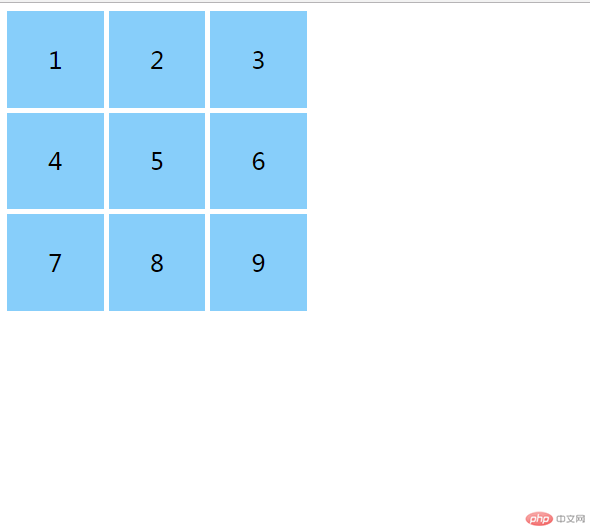
1. 简单选择器
- 元素选择器:标签选择器
body{background-color: lightcyan;}
- 类选择器:对应着html标签中的class属性
.item{border: 1px solid #000;}/* 多个类复合应用 */.item.center{background-color: green;}
- id选择器:对应着html标签中的id属性
/* id选择器 */#first{background-color: lightpink;}
注意事项
- id,class可以添加到任何元素上,所以可以省略*
- 层叠样式表,相同元素,后面追加的样式会覆盖前面的样式
- 选择器优先级: 元素 < class < id,属于元素,所以.item#first样式会覆盖*#first,就是.item#first优先级高于#first
.item#first{background-color: lightpink;}#first{background-color: yellow;}#first.item{background-color: red;}/*最后背景颜色显示red(红色)*/
- id选择器的应用场景目前只有两种:表单元素、锚点
2.上下文选择器
- 后代选择器:通过空格
/*1. 后代选择器:空格*/.container div{border: 1px solid #000000;}
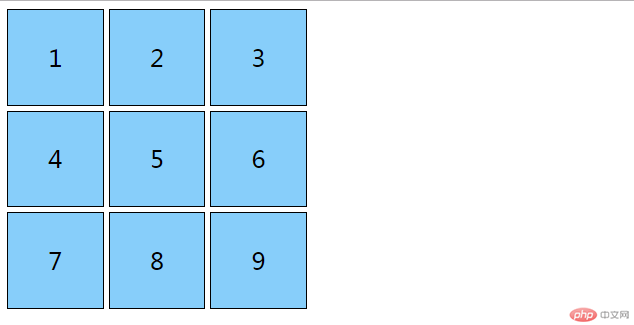
- 父子选择器:通过 > 号
/* 2.父子选择器: > */body > div{border: 5px solid coral;}
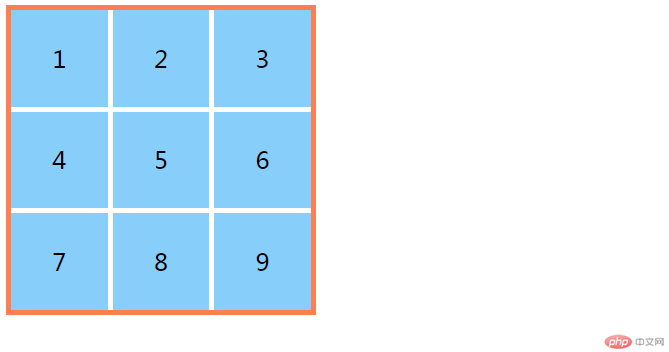
- 同级相邻选择器(给第五个item类加一个center类,然后给它同级下一个标签添样式)
/* 3.同级相邻选择器 */.item.center + .item{background-color: lightgreen;}

- 同级所有选择器(给第五个item后面的同级标签添加样式)
/* 4.同级所有选择器 */.item.center ~ .item{background-color: lightsalmon;}
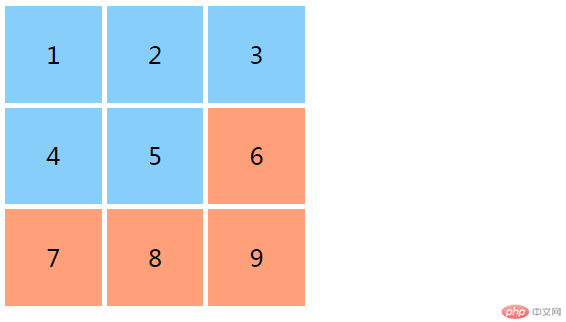
3.结构伪类选择器
不分组(不区分元素类型)
/* 匹配第一个元素 */:first-child{background-color: wheat;}
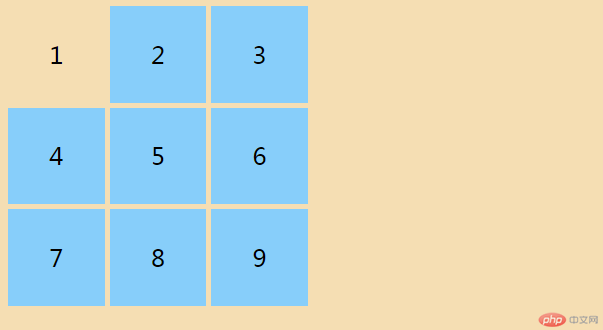
/* 最后一个子元素 */.container > :last-child{background-color: yellow;}
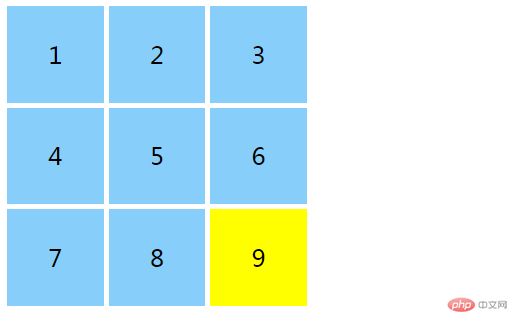
/* 选第三个:索引是从1开始 */.container > :nth-child(3){background-color: limegreen;}
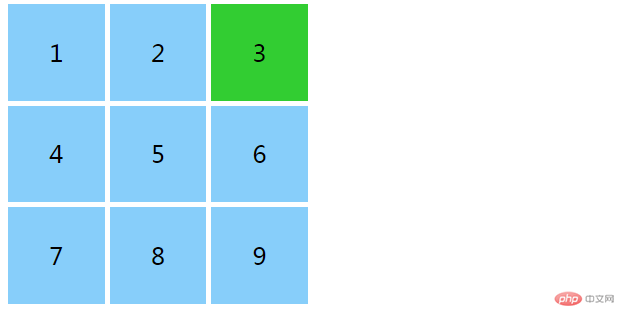
/* 选择偶数单元格 */.container > :nth-child(2n){/* background-color: limegreen; */}.container > :nth-child(even){background-color: limegreen;}/* 选择奇数单元格 */.container > :nth-child(2n-1){/* background-color: magenta; */}.container > :nth-child(odd){background-color: magenta;}
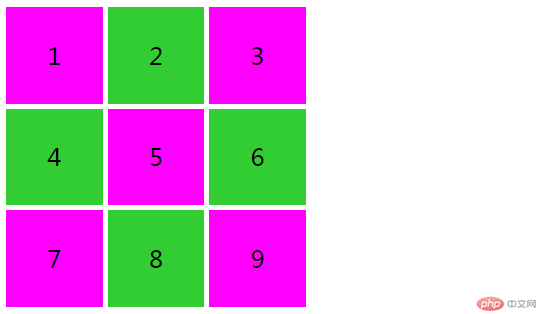
/* 从指定位置(第四个开始),选择剩下的所有元素 */.container > .item:nth-child(n+4){background-color: limegreen;}
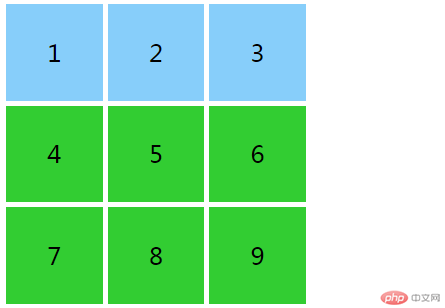
/* 只取前三个 */.container > .item:nth-child(-n+3){background-color: limegreen;}/* 只取最后三个 */.container > .item:nth-last-child(-n+3){background-color: limegreen;}
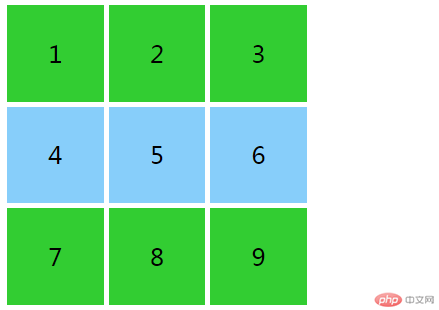
分组
先把九宫格元素分两组<div class="container"><div class="item">1</div><div class="item">2</div><div class="item">3</div><span class="item">4</span><span class="item">5</span><span class="item">6</span><span class="item">7</span><span class="item">8</span><span class="item">9</span></div>
如果只用:last-of-type,会各自给div和span的最后一位添加样式
/* 分组结构伪类分两步1.元素按类型进行分组2.在分组中根据索引进行选择*/.container :last-of-type{background-color: violet;}
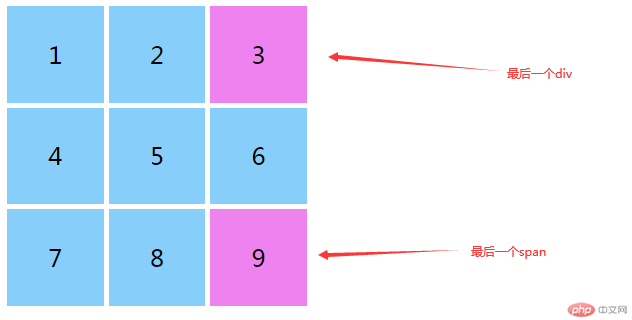
如果在:last-of-type前加上类型进行区分,就只会给指定类型最后一位添加样式/* 分组结构伪类分两步1.元素按类型进行分组2.在分组中根据索引进行选择*/.container span:last-of-type{background-color: violet;}
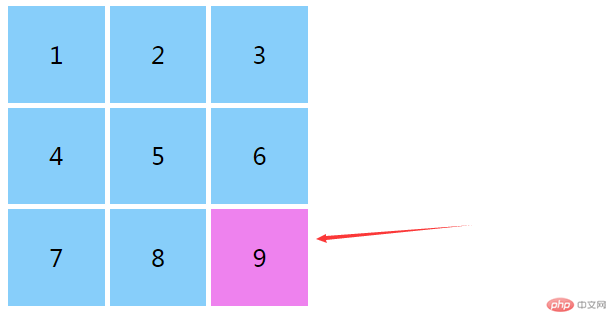
/* 在分组中匹配任何一个 */.container span:nth-of-type(3){background-color: violet;}
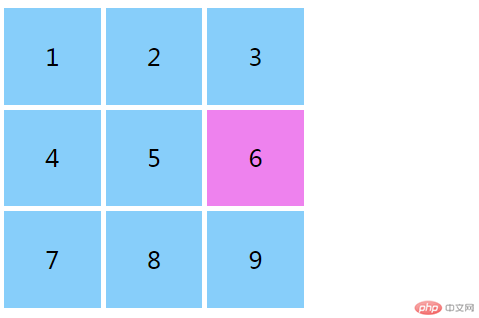
取前三个和后三个/* 取前三个 */.container span:nth-of-type(-n+3){background-color: limegreen;}/* 取后三个 */.container span:nth-last-of-type(-n+3){background-color: violet;}
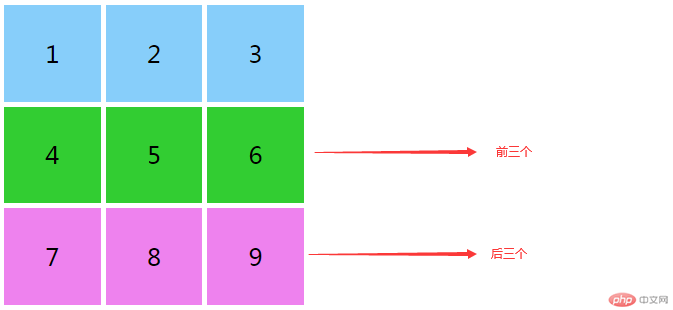
4.伪类与伪元素
基本示例标签
<a href="#login-form">我要登录</a><form action="" method="post" id="login-form"><label for="email">邮箱:</label><input type="email" name="email" id="email"><label for="password">密码</label><input type="password" name="password" id="password"><button>登录</button></form>

伪类 :target
#login-form{display: none;}/* :target: 必须id配合,实现锚点操作 *//* 当前#login-form的表单元素被a的锚点激活的时候执行 */#login-form:target{display: block;}

伪类 :focus
/* :focus: 当获取焦点的时候 */input:focus{background-color: yellow;}

伪类 :not()
<ul class="list"><li class="item">1</li><li class="item">2</li><li class="item">3</li><li class="item">4</li></ul>
/* :not(): 用于选择不满足条件元素 */.list > :not(:nth-of-type(3)){color: red;}

伪元素 ::before与::after (伪元素不为页面中的元素)
/* ::before */.list::before{content: "购物车";color: blue;font-size: 1.5rem;border-bottom: 1px solid #000000;}/* ::after */.list::after{content: "结算中...";color: red;font-size: 1.1rem;}

(注意:伪元素签名是双冒号,伪类前面是单冒号)

